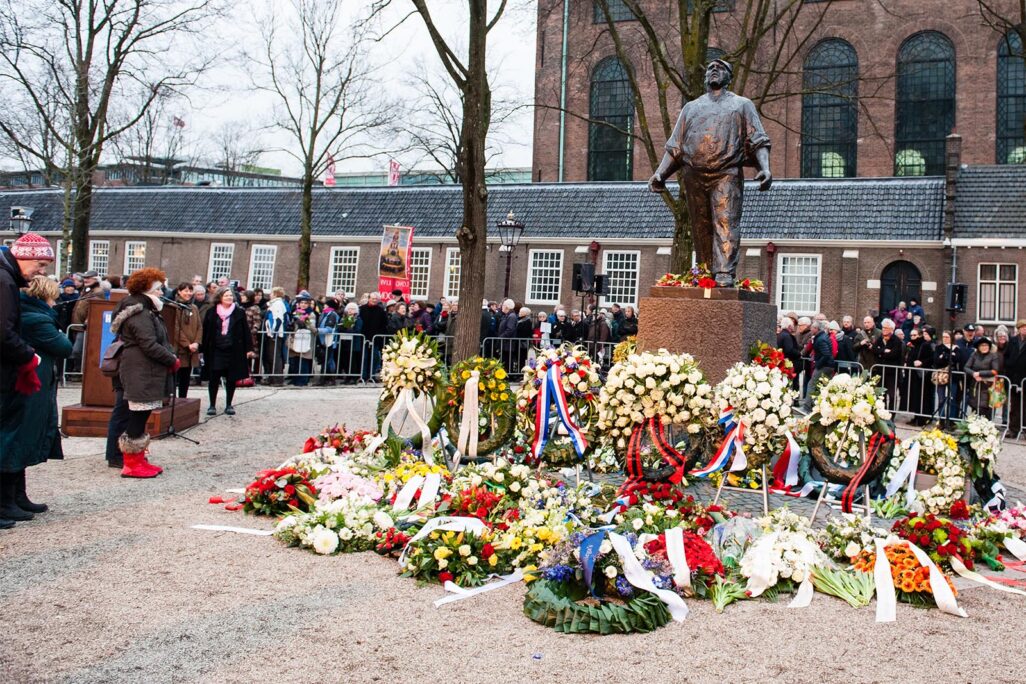
It happened on Tuesday, February 25, 1941. The city of Amsterdam ground to a halt for two days following a protest staged by the city’s workers in opposition to the deportation of its Jewish population. “Bring back our Jews!” called the workers and the protest placards they carried through the city. The strike, which included some 300,000 workers, came in response to the forced deportation of approximately 400 Jews to concentration camps. Despite being one of the first displays of public protest in Nazi-occupied territory, and the first demonstration against the expulsion and extermination of Jews that was organized by non-Jews, the event is all but unknown outside of Holland.
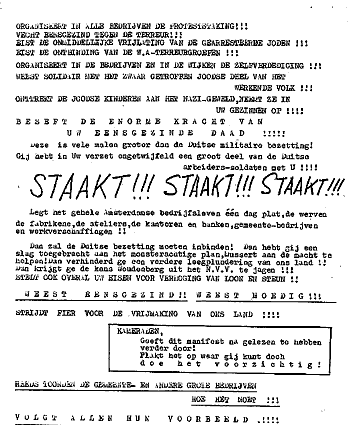
A symbol for the struggle of ordinary people against great evil
Already in the first months following Holland’s surrender to Nazi occupation in 1940, exclusionary and discriminatory measures were put in place against Dutch Jews. In November 1940, Jews were removed from all public positions. The Dutch pro-Nazi militia incited violent provocation and harassment. Jews were beaten in the streets. In response, Amsterdam’s Jews organized self-defense groups, which would walk the streets to confront Dutch fascists, and to suppress their abuse. On February 1, 1941, these groups held off fascists wishing to attack the city’s Jewish quarter.
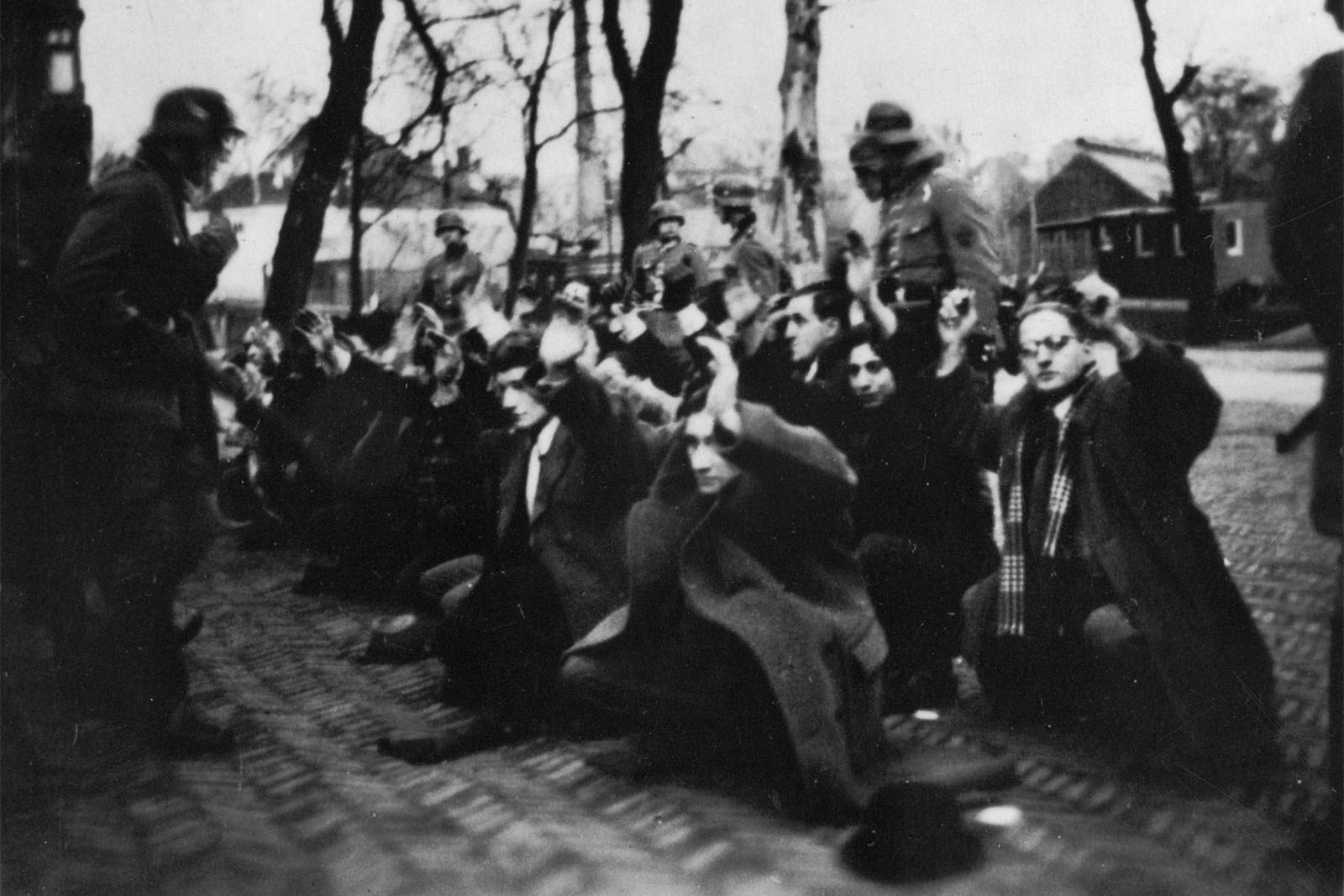
In one of these struggles in early February 1941, a fascist rioter was injured, and succumbed to his wounds days later. In another clash with German Order Police who raided a Jewish store, a number of German police officers were wounded. The German response did not take long: On February 12, German soldiers, with the assistance of the Dutch police, encircled the Jewish quarter with barbed-wire fencing. Over the weekend of February 22-23, large numbers of Nazi forces entered the neighborhood, and amid a murderous pogrom rounded up 425 young Jews who were sent to Kamp Schoorl, a transit camp in northern Holland. From there they were sent to Buchenwald and Mauthausen concentration camps, where the majority were murdered that year.
Amsterdam’s citizens did not remain apathetic to the deportation. The queen demanded the cancellation of the discriminatory laws, and the streets were live with protest. On February 24, 400 people gathered in the Noordermarkt square to hold an emergency meeting to plan a protest. Ordinary people led the event – Peter (Pete) Frederik Willem Nak, a street-sweeper, and sidewalk construction worker Wilhelm (Willem) Johannes Kram, Communist party activists. The pair called the masses to stage a general strike in opposition to the deportations of the Jews and Anti-Semitic violence. In time, they would be recognized as Righteous Among the Nations.
The following morning, members of the Dutch Communist party distributed placards all over the city which read: “Strike! Strike! Strike!” The first to answer the call were streetcar drivers, and soon after, public services also went on strike, as did the schools, the ports and many stores. The strike’s organizers expected the city to gradually join in the strike, however, by around 12:00 a general strike had been achieved, and the city shut down.
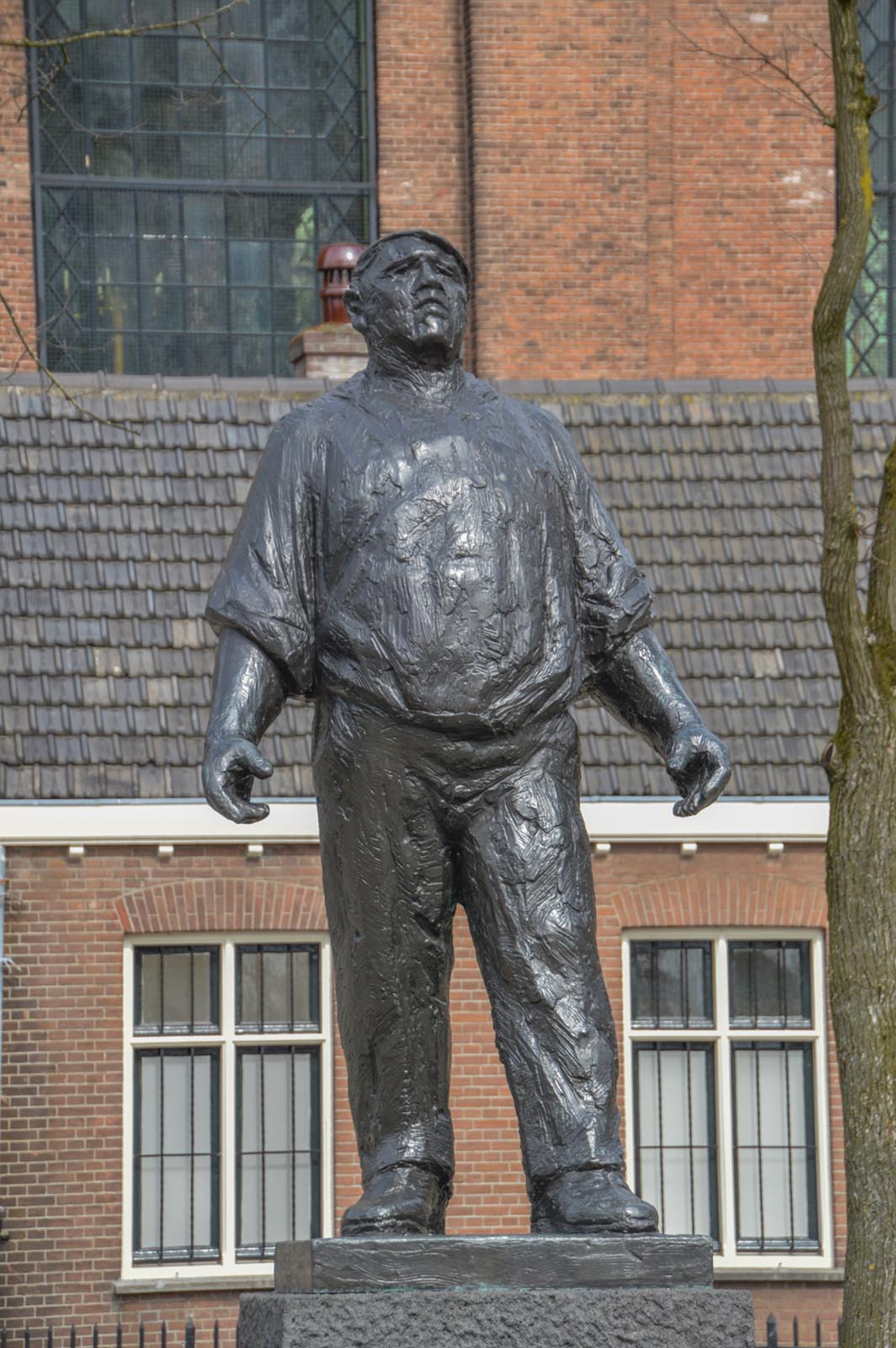
The astonished Germans responded immediately and with a firm hand to stop the protests, and opened fire with live machine guns at the protesters. Despite their attempts at suppressing it, the protest grew and spread to other cities: Zaanstad and Kennemerland in the West, Bussum, Hilversum and Utrecht to the East and South. In total, approximately 300,000 workers went on strike throughout Holland. On February 27, the strike was suppressed, and the cities which participated were fined heavily by the Germans.
The struggle cost the strikers and demonstrators dearly: nine people were murdered by German police suppressing the demonstrations, 24 others were seriously injured and many more were arrested. Two days later, the Nazis tried to paint the strike as a Jewish conspiracy. On March 6, the Jewish communist journalist Lindert Shivershorder was put to death, blamed as one of its leaders. On March 13, three additional community leaders of the strike were executed: Hermanos Mathaus Henriks Kanradi, an electrician, Yosef (Yop) Aigel, a Jewish storekeeper, and Edward Karl Fredrik Halendoorn, who manufactured airplane parts. Alongside them, 15 members of De Geuzen, the Dutch underground resistance, were put to death. The Communist party was severely punished, and 22 of its activists were sentenced to long prison terms in German prisons, two of whom died while incarcerated.
Despite the strike’s short duration, it was the first act of its kind in Nazi-occupied territory, and in its wake a students’ strike was held in November 1941, and another large strike in April-May of 1943, which was also accompanied by acts of armed resistance.
The mobilization of the workers and the trade unions in defense of the Jews was not coincidental. So too were trade union activists persecuted and targeted by the Nazi regime ever since its rise to power in Germany, and it is very likely that union members felt they shared a fate with the Jews. Even prior to the February strike, Amsterdam’s workers protested the forced labor conditions that port workers and union activists were subjected to. But what was extraordinary, was that a general strike would be sparked by something which did not usually inspire any response across occupied Europe – the forced deportation of Jews.
With No Recognition in the World
Around 80 percent of Holland’s Jews, which on the eve of the Nazi occupation numbered around 140,000, were murdered in the Holocaust. Many of them were murdered with the assistance and cooperation of Nazi sympathizers. Nevertheless, Holland also saw displays of great courage, such as the resistance group ‘Nameless Children,’ which saved approximately 250 Jewish children from Amsterdam, greatly assisted by donations of food and provisions. It also saw members of the village Yolanda, whose residents acted collectively to find hiding places for Jews who were smuggled to the village.
The ‘February Strike’ stands out among the events of WWII and the Holocaust as an act of mass public resistance to murder, an act of a sort the world has not often seen. Despite this, the strike remains largely unrecognized, scarcely documented, and almost unknown outside of Holland.
In Israel, the strike was reported on by the newspaper ‘This Morning’ in early March, 1941. A short bulletin at the bottom of page 2 read, “Reports that all tram, gas and electric company workers in Amsterdam went on strike in solidarity with the Jews, amid recent riots which have broken out in Amsterdam.”
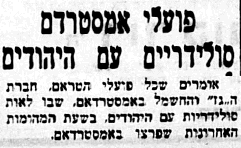
The Dutch sculptor Mary Andriessen erected a monument in honor of the strike in 1952, depicting a dockworker, a symbol for the struggle of ordinary people against great evil. Each year on the strike’s anniversary, February 25, a memorial march is held. Despite the critical role the Communist Party played in organizing the strike, and the heavy price for which it paid, she has personally refrained from attending these memorial events, on account of the Cold War.
In the sixties, a replica of the sculpture, ‘Dockworker,’ has been transferred to Yad Vashem in Jerusalem. The sculpture is part of the museum’s art collection, but is not on display.






